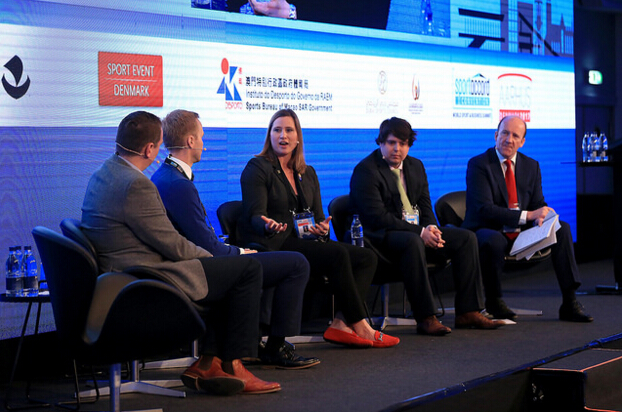Credit: Getty Image
2017-04-05
Throughout the first day of the plenary conference, three talks were held on the topic of innovation; a case study on Orienteering that has used new technology to innovate and grow, a presentation on drone racing that represented the new kind of sport created from technology innovation and the football industry as a scene setter for how big sport cooperation can use innovation to strengthen an already well-established sport. Technology and innovation are the keywords of SportAccord 2017. These talks show how sports organisations are able to harness the new technology and embrace innovation to strengthen the sports.
The first talk on If Innovation in Action was held by Tom Hollowell, Secretary General & CEO, International Orienteering Federation. Orienteering is about finding your way in unknown territory in the fastest way possible. Through the new digital technology, this idea of unknown territory has been completely changed, allowing the spectators of orienteering to actually follow the competitions through RFID technology, GPS tracking and wireless ”running-cams”. GPS tracking shows the audience the decisive moment of the athletes, and cameras allow them to follow them through the arena. Orienteering is one of the sports who have benefitted significantly from the new innovations in technology.
Tom Hollowell argues that innovation is not the technology in itself, but the use of technology. Orienteering are using already developed technology to enhance the experience for both the participant and the audiences. Not just professional athletes can use GPS-tracking and auto generated maps, but also private practitioners through apps and GPS-watches. Innovation have changed the sport, making it more visible, accessible and attractive to participate.
The second talk on Future Sports – Drone Racing was held by Susanne Schödel, Secretary General, FAI - Fédération Aéronautique Internationale.
When a modeler said to his fellow; ”my model flies faster than yours”, Aeromodelling competition was born. Today pilots build their own fly quad-copter drones to compete in drone racing. Through First Person View googles, the pilots steer the drones through a path. The audiences follow the race through the on-board camera. Drone racers origin from aeromodelling and esports/egaming, but some join without further experience.
Susanne Schödel went through three points; Safety, innovation and sports. Because the stakeholders have high expectations for the development of drone technology, advances in development are made very quickly. Safety issues are currently being addressed, but can’t match how fast the technology is evolving. As an example unmanned aviation is evolving too fast at the moment to become a reality in the foreseeable future. To accommodate the safety issues, drones are being subject to a lot of governmental regulations.
In regard of Innovation, Frank Wang, founder and CEO DJI innovated the drone market by combining drone technology with camera technology, which changed the view on racing events. The cameras suddenly made it possible to follow everything.
Susanne Schödel mentions three types of sport drones; off the shelve drones that can be bought in stores by private consumers. FPV racing drones, where people build their own racing drones and large drones. When using large drones, you need a pilot license and training to use it. The future of drone racing lies in the large drones, which are being developed to break the limits of drone racing and professionalising the sport.
Tom Glick, CCO, City Football group introduced Innovation in the Business of Sport through his insight on how he used innovation to strengthen an already established sport as football. Football is by all definitions very popular. City Football has offices all around the world to accommodate fans across the globe.
To develop and enhance their fan base, they asked who the modern football fan is. Timeless attributes seen in the past and today were wish to win, hope and belief in a team though it did not win, the expectation of a great experience when consuming sport and sharing this with friends and family. The new sports consumer supports the sports through the smartphone. Social media gives a sense of belonging, because sport consumers wishes to be a part of a bigger club. Over half of the sports fans go online when watching sport. It lets them follow several clubs, so at least one of them win and give them a sense of success. This new media lets new audiences discover the sport.
He asked then, how to innovate the industry through the understanding of the new consumer. The answer was through the CFG business model, the creation of City Football Academy and doing digital first. Digital first included compelling content and innovation in the digital and commercial activation. Examples being using cultural icons in content creation, snapchat spectacles, having a Hackathon and discovering the world of Jaunt virtual reality.
For more information, please go to SportAccord Convention website at www.sportaccordconvention.com
